- Donatif
- Allenamento e Benessere: Guide, Benefici e Produttività
- 0 likes
- 940 views
- 0 comments
Calisthenics is an extraordinary discipline that relies onusing body weight to train and improve various physical abilities, such as strength, endurance,balance and coordination. This form of training has its roots in ancient practices and has been rediscovered and modernised over time, becoming one of the most popular methodologies in the fitness world today. One of the most interesting features of calisthenics is its versatility: it requires no expensive equipment or dedicated space, making it accessible to virtually anyone, regardless of experience level or age.
Thanks to its minimalist nature, it can be practised anywhere, whether indoors oroutdoors, and can be adapted to the needs of everyone from beginners to experts. This type of training not only helps develop harmonious and functional muscles, but also helps improve body control, posture and flexibility. In an age when physical well-being is often associated with the use of complex machinery, calisthenics represents a return to basics, promoting a natural and sustainable approach to movement. It is therefore the ideal choice for those who want to achieve their fitness goals without investing in expensive gym memberships or elaborate equipment.
Why Choose Calisthenics?
Calisthenics is one of the most accessible and versatile forms of training, suitable for anyone who wants to improve their fitness without the need for expensive equipment or gym memberships. This discipline offers numerous advantages and is perfectly suited to a modern, dynamic lifestyle, often characterised by the need to reconcile personal and professional commitments.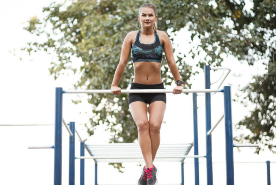
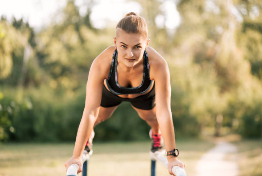
You can train anywhere, even at home or outdoors
One of the most appreciated features of calisthenics is its logistical flexibility. You do not need a specific environment to train: you can use your living room, a park or even a beach. Free-body exercises can be performed using only your own body weight or, at most, with simple supports such as a bar or bench. This makes it perfect for those who like to exercise outdoors or for those who prefer to stay in the comfort of their own home.
It is suitable for all levels, from beginners to experts
Calisthenics is a highly scalable discipline, which means it can be easily adapted to each person's abilities.
- Beginners: You can start with simple movements such as modified push-ups, squats or planks. These exercises will help you build a solid base without feeling overwhelmed.
- Intermediates: Once you have gained more strength and body awareness, you can move on to more challenging exercises such as pull-ups, dips and push-up variations.
- Experts: For those who are already experienced, calisthenics offers advanced challenges such as the planche, front lever or muscle-up, which require considerable control and strength.
In this way, calisthenics allows you to progress gradually, keeping your motivation high and setting new goals.
Improves strength, flexibility and body control
One of the most fascinating aspects of calisthenics is the way it combines different elements of physical training into a unique discipline.
- Strength: The use of body weight as resistance stimulates all major muscle groups, promoting harmonious and functional muscle development.
- Flexibility: Many exercises, such as deep squats or dynamic movements, improve joint mobility and muscle elasticity, reducing the risk of injury.
- Body control: With calisthenics, you will learn to master each movement, developing a body awareness that goes beyond mere training. This ability is also positively reflected in your daily life, improving posture and balance.
An economical and sustainable workout
Unlike other forms of training, calisthenics requires no investment in expensive equipment or monthly subscriptions. A pull-up bar, a mat or even a public park with basic facilities are more than enough to get started. This makes it a sustainable choice not only for the wallet, but also for the environment.
Mental and motivational benefits
In addition to the physical benefits, calisthenics can have a positive impact on the mind. The continuous progression, the ability to reach goals such as a pull-up or a planche, and the freedom to train in a natural environment help reduce stress and improvemood. You will feel an increasing self-confidence as you conquer new skill levels.
In summary, calisthenics is an ideal choice for anyone who wants to combine simplicity, effectiveness and freedom in training. It is more than just a discipline: it is a lifestyle that promotes physical and mental well-being in a natural and sustainable way.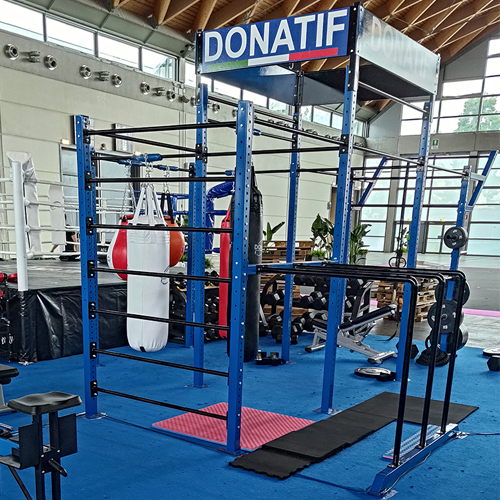
Basic Exercises for Beginners
Getting started with calisthenics means becoming familiar with a series of basic exercises that help build strength and improve body control. These exercises, when performed correctly, are the foundation of an effective and safe workout. Here is a detailed description of each exercise and its benefits.
Push-ups (Push-ups)
- Objective: To strengthen chest, triceps and shoulder muscles, while also developing general core stability.
- How to perform it:
- Position yourself with your hands resting on the floor, slightly wider than your shoulders.
- Keep your body in a straight line, from head to toe, avoiding arching your back or lifting your pelvis too much.
- Slowly lower your body by bending your elbows until your chest touches the floor, keeping your elbows close to your body for more control.
- Push back up to the starting position.
- Tips: Start with a few repetitions, focusing on technique. If you find it difficult, you can perform the push-ups by resting your knees on the floor.
Squat
- Objective: To strengthen the legs (quadriceps and hamstrings) and buttocks, while also improving the mobility of the hip and knee joints.
- How to perform:
- Position yourself with your feet shoulder-width apart and your toes pointing slightly outwards.
- Contract your core and keep your back straight as you slowly lower yourself, bending your knees and pushing your hips back.
- Descend until you reach a 90-degree angle with your knees (or lower if possible), keeping your heels firmly on the ground.
- Slowly climb back up to the starting position, pushing hard from your heels.
- Tip: Avoid bending your back too much or moving your knees too far forward in relation to your feet. You can use a chair behind you as a reference point to check your depth.
Plank
- Objective: To strengthen the core, improve stability and support correct posture.
- How to perform it:
- Lie on your stomach and stand on your forearms and toes.
- Lift your body, forming a straight line from head to toe.
- Hold this position for as long as possible without letting your hips sag downwards or lift them too high.
- Tips: Focus on regular breathing and contract your abdominals to maintain stability. If you are a beginner, you can start with short intervals of 10-15 seconds and gradually increase.
Australian Pull-Ups
- Objective: To train the back and biceps while improving upper body strength.
- How to perform:
- Find a bar positioned at a low level, such as an adjustable pull-up bar or a stable horizontal support.
- Lie down under the bar with your body at an angle and your feet resting on the floor.
- Grasp the bar with a prone (palms facing you) or supine (palms facing up) grip.
- Pull your body towards the bar, keeping your core contracted and your body straight.
- Slowly return to the starting position.
- Tips: Focus on control during the movement. If you do not have a bar available, you can use a stable table as an alternative.
Leg Raises
- Objective: To strengthen the lower abdominals, improving core control.
- How to perform:
- Lie on your back with your arms stretched out along your sides and your legs straight.
- Slowly raise your legs until they form a 90-degree angle with your torso, keeping your lower back against the floor.
- Slowly lower your legs without touching the floor, controlling the movement.
- Tips: If you find it difficult, you can bend your knees slightly to make the exercise easier. Avoid arching your back during the movement to prevent injury.
Tips for Success
- Start slowly and focus on technique.
- Graduallyincrease the repetitions and intensity.
- Don't forget the warm-up before you start and stretching afterwards.
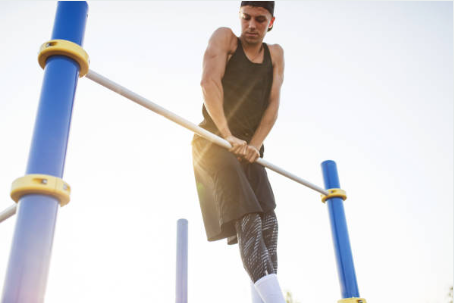
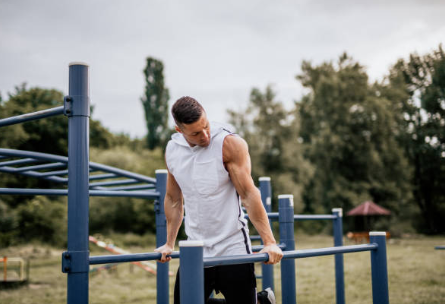

.jpeg)
Comments (0)